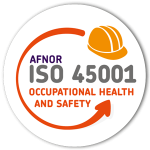Rig Up Your MPD System Faster and Smarter
Category : Drilling
What is MPD Rig-Up and Why It Matters
Managed Pressure Drilling (MPD) is a drilling technique designed to precisely control the annular pressure profile in the wellbore. The rig-up phase involves installing MPD equipment at the surface, and it’s a crucial step that directly affects time, safety, and cost.
Why Speed Matters in MPD Rig-Ups:
- Reduced non-productive time (NPT)
- Lower operational costs
- Improved safety
- Faster well delivery
Step-by-Step: How to Rig Up Your MPD System Faster
1. Pre-Planning and Site Readiness
- Conduct a pre-job planning meeting with MPD contractors, rig crew, and drilling engineers.
- Use 3D digital twins or rig modeling to visualize MPD integration points.
- Ensure site has adequate space, power, and access for MPD equipment.
2. Standardize Connections and Interfaces
- Utilize quick-connect manifolds, pre-installed hoses, and uniform flange types.
- Pre-fabricate all custom spool pieces to match your rig’s specs.
3. Use Modular MPD Equipment
- Choose modular MPD kits designed for fast deployment.
- Ask vendors for “plug-and-play” designs with pre-wired controls and compact skids.
- Consider providers like Al abragest for engineered MPD solutions that are optimized for rapid rig-up and safe integration.
💡 Alabragest offers technical expertise and customizable MPD systems tailored for high-efficiency rig-ups in challenging environments.
- Choose modular MPD kits designed for fast deployment.
- Ask vendors for “plug-and-play” designs with pre-wired controls.
4. Train Your Crew in Advance
- Run MPD familiarization drills during downtime.
- Host vendor-led workshops on rig-up best practices.
5. Use Checklists and Digital SOPs
- Digitize your rig-up checklists using tablets or mobile apps.
- Integrate your SOPs with a central planning system (like Wellsite or Pason).
6. Communicate in Real-Time
- Use communication platforms like Teams, Slack, or dedicated rig ops apps for real-time status updates.
- Assign a rig-up lead who tracks progress and removes blockers.
7. Monitor and Review Every Rig-Up
- Record rig-up time, issues, and team feedback after each setup.
- Build a knowledge base of lessons learned and time-saving tactics.
When to Rig Up MPD (Timing is Everything)
- Before drilling unstable formations
- When expecting narrow pressure windows
- When planning to drill managed pressure or underbalanced wells
- As part of a proactive kick mitigation strategy
FAQs About Rigging Up MPD Systems
How long does it typically take to rig up MPD?
With proper planning and modern equipment, MPD rig-up can take 6–12 hours. Without it? Up to 48+ hours.
Can I rig up MPD offline?
Yes. Some operators perform offline rig-ups while other rig operations are ongoing, minimizing impact on the critical path.
What’s the biggest rig-up delay?
Custom equipment compatibility issues and untrained crews are the top two.
Final Thoughts
Speedy rig-ups aren’t just about saving time — they’re about minimizing risk, maximizing efficiency, and setting your team up for drilling success. The key? Plan early, train thoroughly, and standardize everything you can.





